Author: Dave Banack
-
Troubling Dreams
I keep my visions to myself.Have you any dreams you’d like to sell? Mormons tend not to keep their visions to themselves. In his recent General Conference talk “How to Obtain Revelation and Inspiration for Your Personal Life,” Elder Richard G. Scott seems to be inviting Mormons to do the same with their dreams.
-
Polygamy 2012
Once upon a time, family law was a marginal legal topic that didn’t make many headlines the way constitutional law or criminal law so often do. But gay marriage and Prop 8 have propelled family law and marriage to the legal center stage. In an odd parallel development, “the family” has, over the last few…
-
A Nation of Heretics?
Ross Douthat posted a column adapted from his new book, Bad Religion: How We Became a Nation of Heretics (Free Press, 2012). Mormons are used to denigrating references — recall Mitt Romney’s response to the Baptist pastor Robert Jeffress, “I’ve heard worse” — but it still has some shock value for most American Christians, who…
-
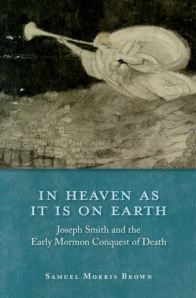
Esoteric Mormonism: Marginal or Mainstream?
I recently finished reading Samuel Brown’s In Heaven as It Is on Earth: Joseph Smith and the Early Mormon Conquest of Death (Oxford University Press, 2012; publisher’s page). It’s an impressive book, although I disagree with the implicit argument of the book that the esoteric branch of Joseph Smith’s eclectic and diverse theology is central…
-
Mormon Doctrine: Confusion or Clarity?
Mormon doctrine is showing up in unlikely places lately, including the campaign trail, where earlier this week Mitt Romney squelched a questioner’s short speech that started off quoting from the Pearl of Great Price. I suspect that will not be the last doctrinal question of this campaign. But the glare of heightened publicity and attention…
-
Sunday Afternoon Session
President Uchtdorf conducted the closing session of General Conference. Direct quotations of a speaker’s words (based on my notes) are given in quotes; other text is my summary of the remarks given. Any text in italics represents my own editorial comment.
-
Saturday Priesthood Session
President Eyring conducted the Saturday evening Priesthood Session. Direct quotations (based on notes by Kent and myself) are given in quotes; all other text represents my summary of the remarks given. Text in italics is my own editorial comment. I have highlighted in bold type one particularly striking thought or comment in each talk.
-
Saturday Afternoon Session
President Eyring conducted the Saturday afternoon session. Direct quotations of a speaker’s words (based on my notes) are given in quotes; other text represents my summary of the remarks given. Any text in italics represents my own editorial comment.
-
Conference Pre-Game
Good morning, Conference viewers. Times and Seasons will once again post session-by-session summaries of Conference by Kent and Dave. Whether you are attending in person, listening on television, iPad, or radio, or will miss a session due to conflicts, we hope the posts add something to your Conference weekend.
-
Notes: Mormonism and the Internet
Below are notes from today’s live-streamed presentations at Utah Valley University’s Mormonism and the Internet conference. I will bold particular comments that stand out as I listen. Readers are welcome to make additional observations in the comments. Any reader attending in person?
-
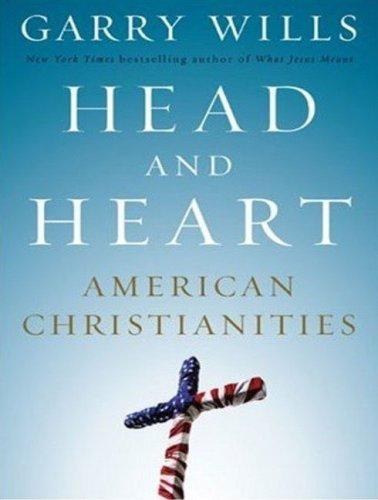
Mormonism: A religion of the head or of the heart?
That question is not as straightforward as you might think. Garry Wills’ Head and Heart: American Christianities (Penguin Press, 2007) reviews these two different approaches and uses them to structure his history of Christianity in America. It is an effective format that helps the reader follow developments, in contrast to most histories of religion in…
-

Your help needed: naming Mormon ice cream
Not too long ago, Ben and Jerry’s opened a new front in the culture wars by temporarily renaming its “Chubby Hubby” flavor as “Hubby Hubby” and highlighting this chilling act on their website. And now they’re at it again. I’m guessing that at some point the Church will respond with its own renamed flavor, which…
-
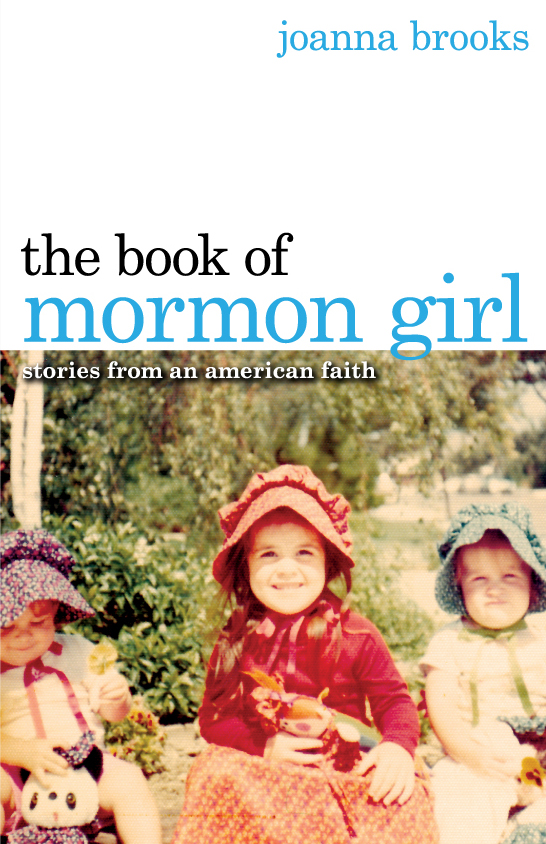
Review: The Book of Mormon Girl
Joanna Brooks is the Chair of the Department of English and Comparative Literature at San Diego State University. She is the author of several books, most recently The Book of Mormon Girl: Stories From an American Faith (2012). The book is available at Amazon and at the author’s website. A short couple of hundred pages,…
-
The Bott Affair: Winners and Losers
It has been only one week since the initial Washington Post article quoting BYU Professor Randy Bott’s controversial statements was published. [See Kent’s very helpful ongoing chronology of events and published stories.] But a week is a lifetime online. While official and unofficial reactions will continue to play out over coming weeks and months, we…
-

The Not-So-Great Apostasy
I have seen several notices publicizing an upcoming conference at BYU, Exploring Mormon Conceptions of the Apostasy. Sounds interesting, particularly in light of the one-paragraph blurb stating goals for the conference, which challenges rank and file members of the Church as well as scholars to reconsider LDS views of “the Great Apostasy”: Examining claims of…
-
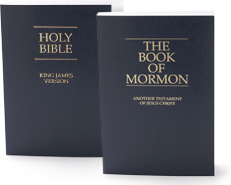
The Real World of the Book of Mormon
This is the fourth in a series of posts taking a broad look at the Book of Mormon. This post continues the discussion of the prior post, The Book of Mormon as Narrative, by considering verisimilitude. This term refers to how faithfully a text represents the real world or, to various degrees, depicts events that…
-

The Book of Mormon as Narrative
This is the third post in a series taking a broad view of the Book of Mormon (first, second). In this post I will discuss aspects of narrative encountered in the text. Not all scripture is narrative: consider the lengthy legal codes in the Torah and the moral exhortation found in James. Not all historical…
-
The Book of Mormon: What has it done for you lately?
Julie is posting detailed commentary and Kent is providing literary reflection; I’m afraid all I have to offer on the Book of Mormon is general observations. This week let’s talk about situating the book as a whole, not so much in terms of content and form (which I’ll address in later posts) but in terms…
-
Which Book of Mormon?
The flurry of posts at T&S and elsewhere around the Bloggernacle is a reminder that 2012 is Book of Mormon year in Gospel Doctrine class. Which Book of Mormon are you going to read?
-
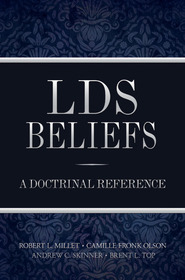
Under the tree: LDS Beliefs
The latest book to digest Mormon doctrine for the popular LDS audience is LDS Beliefs: A Doctrinal Reference (Deseret, 2011), by four BYU religion professors: Robert L. Millet, Camille Fronk Olson, Andrew C. Skinner, and Brent L. Top. Entries are alphabetical, with authorship and cited sources listed following each and every entry. It’s out just…
-
Religious Anti-Intellectualism
A few weeks ago two Evangelical scholars authored “The Evangelical Rejection of Reason,” an op-ed at the New York Times lamenting the fact that the Republican primary race “has become a showcase of evangelical anti-intellectualism.” While the Mormons in the race, Romney and Huntsman, were described as “the two candidates who espouse the greatest support…
-
Ben S. Joins the Team
Times and Seasons is pleased to announce that — after a very long stint as a guest blogger — Ben S. has agreed to come onboard as a permanent contributor. I certainly look forward to many interesting posts. Welcome Ben!
-
John Wesley on the Pride Cycle
Re-reading the second half of Paul Johnson’s A History of Christianity last week, I ran across this interesting commentary penned by John Wesley. Here’s what he wrote sometime in the late 18th century (quoted at page 368; emphasis added):
-

Do Mormons Get a Seat at the Table?
I just started reading the recently published Tri-Faith America: How Catholics and Jews Held Postwar America to Its Protestant Promise, by Kevin M. Schultz (OUP, 2011). With Mitt Romney’s Mormon-ness continuing to be an oddly fascinating topic for the mainstream media, a point of criticism and ridicule for journalist comedians (they think they are journalists,…
-
LDS Men Aren’t Incredible
Wheat & Tares ran a fun post earlier this week titled LDS Men Are Incredible … although the URL string shows that the original draft title of the post was “Why Men Suck.” That kind of marks off the two ends of the spectrum, doesn’t it? That’s a nice lead-in for the question: What remarks…
-

Creationism and LDS Seminary
It’s late September and LDS high school students really should be back at school … and back at seminary. This year’s course of study is the Old Testament, which covers (or has already covered) Genesis 1 and the Creation. I hope LDS seminary teachers can teach Creation without teaching Creationism. But I fear some LDS…
-
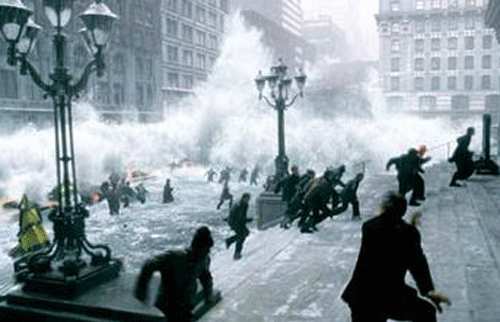
Hurricane open thread
It’s going to be a long day for some East Coast readers, but at least you’ve still got Internet. This thread is to share your first-person accounts and post helpful information. My contribution: Weather Underground, the best online source for hurricane tracking information. As of 11 AM EDT Saturday, their tracking map forecasts a storm…
-
Times & Seasons Welcomes Ben Spackman
Times and Seasons is pleased to welcome Ben Spackman as our latest guest blogger. Ben received his BA in Near Eastern Studies from BYU and an MA in Near Eastern Languages and Civilizations from the University of Chicago, focusing on philology and Semitic languages such as Arabic, Hebrew, and Aramaic. During his graduate summers, he…
-
Bible, Church, and Mystic
On a recent trip, I took along as reading material Christianity: A Very Short Introduction (OUP, 2004) by Linda Woodhead. Like all of the books in the wildly successful VSI series, the book is short but informative. I want to focus on the author’s analysis of how views about divine power and earthly authority can…
-
An Unsettling Book: Grant Hardy’s Understanding the Book of Mormon
This is the fourth in a series of reviews of Grant Hardy’s Understanding the Book of Mormon: A Reader’s Guide (OUP, 2010) that we are posting this week at Times and Seasons. It says something about the book that there is still a lot to talk about.
